Sukanya Verma in Mumbai
In our special series re-visiting great Hindi film classics, we look back at Raj Kapoor's directorial debut Aag.
The first film is always indescribably special.
But as director Wes Anderson aptly observes, no one at that point thinks of it as a 'stepping stone to anything' because 'the thing itself' is 'just everything in the world to us then.'
And making Aag meant the world to a 23-year old Raj Kapoor, one of the youngest filmmakers of his time.
Though he began his career as an actor in 1935, it was only after he turned an independent producer and director with RK Films' dark, surreal tale of burning passion for the arts and his childhood sweetheart that Kapoor destined himself for greatness.
Swathed in metaphors, Aag is about a unique but impulsive man named Kewal (Raj Kapoor) possessed by a desire to stage a show ever since he watched a local play about Bilva Mangal and Chintamani as a school boy with his best friend, Nimmi.
Kapoor depicts the gentle bond between the younger versions of his ideals with so much care; it becomes imperative to root for our unusual hero.
It does help that the 10-year-old Kewal is played by his delightful kid brother Shashiraj aka Shashi Kapoor.
Armed with his now familiar, winning smile and a spirited tone in his young, shrill voice, Kapoor junior is a complete natural facing the camera and conveys the sensitive and pining temperament of, what Raj Kapoor's Kewal will eventually grow up to be, rather effectively.
Exploring defining childhood experiences
Image: Raj Kapoor in AagBut Aag, inspired by Orson Welles' Citizen Kane in technique, unfolds in flashbacks after a newly married Kewal climbs the stairs to present himself to his eagerly anticipating bride (Nigar Sultana).
A sly play of low-key lighting stubbornly concentrates on one half of his face even as he breaks the ice by engaging in a playful banter with 'Ghoongat Sahab.' The informal vibe of this moment is immediately shattered with the bride's scream and an expression that implies horror and disgust.
She has seen the rest of her better half.
Disfigured by a fire not too long ago, a dejected Kewal rues the three things that led to a situation where he'd be constantly subject to such negative reaction -- his fascination for the theatre, his obsession for Nimmi and his erstwhile good looks.
And thus begins an exploration into the mind of Kewal through the defining experiences of his childhood, adolescence and adult life.
The first heartbreak
Image: Shashi Kapoor in AagRaised in a family of lawyers by a stern father and docile mother, Kewal is a somewhat timid personality who rises to the occasion only when accompanied by partner-in-crime and constant companion Nimmi.
He is all set to recreate their own version of Bilva Mangal (and hilariously so) with Nimmi only to discover she's left town with her family.
A lingering shot of the moving bus leaving a distraught Kewal behind dwells on the enormity of his first heartbreak.
In the book Raj Kapoor Speaks, put together by his daughter Ritu Nanda, Shashi reveals that even though he enjoyed working on Aag as a kid he didn't quite fancy the late night shoots but his director brother knew how to get it done by tempting the foodie with omelette or juice.
Questioning academics
Image: Raj Kapoor and Kamini Kaushal in AagEven after he enters college, Kewal (Kapoor sans his trademark moustache) broods over his Nimmi saying, Zindagi ke pehle sunehre sapne ko bhala koi bhool sakta hai?
Perhaps this unswerving attachment to someone he was close to 'Sau saal pehle jab main dus saal ka tha,' is appealing to every woman he comes across and wants to mould herself into the image of Nimmi, now epitomising the flawless, perfect woman.
During this time, he meets Nirmala (Kamini Kaushal in a cameo does fine except when jarringly theatrical in her final scene), his only female classmate and the two become quite close to each other.
This time, too, just as he's about to perform on stage, she sadly reveals she cannot participate since she's getting engaged the very same evening.
Once again, the camera slowly zooms out from a forlorn Kewal blessing her with all the happiness life could possibly offer. His misery doesn't end here.
In a tensely picturised moment, Kewal learns he has flunked in his exams and heads to the closest mountain top and dive to death.
A sudden memory of his Bilva Mangal days, however, stops him from taking such an extreme step and he decides to quit studies, defy his father's ambitions and pursue theatre.
When his father understandably objects, Kewal argues, 'Aur aaj kal ki padhai hoti bhi kya hai? Aathve Henry ke aath biwiyan thi. Imaan aur supply mein gehra taaluk hai. Iske alava thodisi angrezi, thodi si Sanskrit aur baaki pachaas number ki Hindi? Main poochta hoon Henry agar aath ke bajaye dus shaadiyan kar leta toh humare liye kya farak padta'.
Given the value of academics in the first family of film, this outlook, though debatable, shoots straight from the heart.
The stunning soliloquy
Image: Prem Nath and Raj Kapoor in AagAfter struggling and wandering aimlessly, he lands at Royal Opera House and delivers a stunning soliloquy to an empty audience, which poignantly reveals the agony and guilt he's undergoing over confronting his parents.
The stage is comforting and lets him be whoever he wants.
And so his innermost feelings blurt out as he convinces himself about why he did what he did, about leaving his pleading mother behind, about failing his father but mostly how everyone should have the freedom to follow their dreams and not subscribe to someone else's idea of how their lives ought to be.
Moved by this dramatic but heartfelt outburst, Rajan, theatre owner and painter (played by Kapoor's brother-in-law Prem Nath) immediately offers Kewal shelter, job, partnership and a complete go ahead to exercise his free will almost like a Fairy Godmother holding a cigarette in place of a wand.
Kapoor's conviction in the afore-mentioned scene is so strong that it is easy to buy the unlikelihood of this possibility.
Nargis and Raj Kapoor's magical chemistry
Image: Nargis in AagHis top-billed co-star, Nargis appears nearly 80 minutes into the movie. It is the first time; the two came together on screen and its instant magic, alright.
And why not? She's a complete darling and the camera adores her. But her dancing skills leave a lot to be desired leading Kapoor to remark, 'Badan mein kuch loch paida karlo toh aur achha ho jaaye.'
There's a lovely story behind their first meeting and how it prompted Kapoor to sign her for his directorial debut.
In an interview to Simi Garewal for the documentary Living Legend: Raj Kapoor, he reveals how the scene in Bobby when Rishi Kapoor meets Dimple Kapadia for the first time at the doorstep and she, without knowing, rubs off some of the besan batter on her forehead was inspired by his original encounter with Nargis.
It left a lasting impression on him to include both her and the scene in his movies.
In Aag, the luminous actress (she celebrated her 16th birthday during its making) plays a nameless product of the post-partition riots in Punjab who flees to Bombay and finds acceptance, support and admiration at Kewal Theatres.
Matters of the heart
Image: Nargis and Raj Kapoor in AagWhile there is visible warmth between her and a decidedly self-assured Kewal, in the manner he caresses her hair, rechristens her 'Nimmi' or she marvels at his 'blue eyes and golden hair' with a smitten smile, there's no official proclamation of love.
She also happens to be a quietly seething (but mostly underdeveloped) Rajan's secret muse, a discovery that leaves Kewal both -- startled and remorseful.
After all, everything Kewal accomplished is Rajan's doing. He cannot possibly steal his girl. At the same time, he's wildly disappointed in Nimmi for liking him solely because of his looks.
Whether the latter is a genuine sore point or an excuse he offers himself to get over his third heartbreak is open for interpretation.
It's as he says, 'Neeli aankhen aur sunehre baal zindagi ke mushkil raahon par saath nahi dete. Sapnon ka sunehra sansaar zara si aanch lagne par moam ki tarah pighal ke reh jaata hai' and grabs a torch to burn his face, setting the entire stage in flames.
Quite a volatile visual of a backdrop bursting in fierce screams of 'Aag, Aag.'
Filmed at a urgent pace with the intent to jolt the viewer by Kewal's extreme impulses that eventually burn down everything that ever mattered -- his heart, his dream and his face.
Mature beyond his years
Image: Raj Kapoor and Nargis in AagKapoor explored this multiple break-my-heart-and-left-me-alone scenario with decidedly more melodrama in his magnum opus Mera Naam Joker as well.
Only there, the women would give back his joker doll, here they return the appellation of Nimmi. Similarly the theme of inner beauty taking precedence over unsightly scars was further explored, but in a visibly tantalising tone, in Satyam Shivam Sundaram.
Unlike these films, Aag is neither overlong nor indulgent; it is a vibrant expression of a youth's idealism and complex philosophies of life and how he sees himself in it.
Aag may not have the finesse that comes with experience but it has an untouched rawness, innocence that can never be replicated.
Also it's a remarkable accomplishment and display of profound maturity for a man in his early 20s.
Released soon after independence, this1948 black and white drama may not capture the ambiance of liberty but the body language of its narrative (written by Kapoor's friend and long-time collaborator Inder Raj Anand) acknowledges a sense of idealism in the air wholeheartedly.
This optimism border-lining on fantasy that runs through all his creations leads to Aag's rather farfetched climax but because Kewal has indeed endured enough, you accept it with half-hearted fervour.
A breathtaking debut
Image: A scene from AagDespite its few flaws and inconsistencies, Aag is a breathtaking debut by Raj Kapoor.
It's incredible to witness his unadorned artistry, brilliant flair for compositions (influenced by the masters of European cinema) but not-so-keen ear for catchy music (through Ram Ganguly's Zinda hoon is tarah sums up Kewal's despair rather beautifully) before he went on to channel Charlie Chaplin in superior classics like Awaara, Shree 420, embraced the showman in Sangam, Mera Naam Joker and Prem Rog or expressed eroticism through Satyam Shivam Sundaram and Ram Teri Ganga Maili.
Like most first-timers Kapoor too struggled to find distributors for Aag, which doesn't conform to the routine -- romance, song and dance -- easy conflict.
And yet, like poetry, it reads differently to different audience. For some Kewal may be a love-sick drifter, for some a man ahead of his time, for some just a regular guy looking for approval from a family that never quite could.
Raj Kapoor delivers a multi-faceted protagonist without rendering him overbearing or esoteric by lending him heart, tons of it.
He is passionate. He is vulnerable. He cries. He rebels. He fails. But his uncompromising spirit can neither be burned nor forgotten.
Just like Aag.

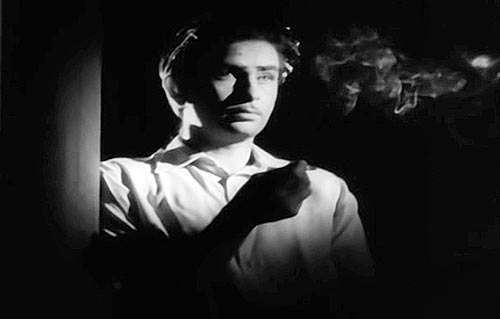
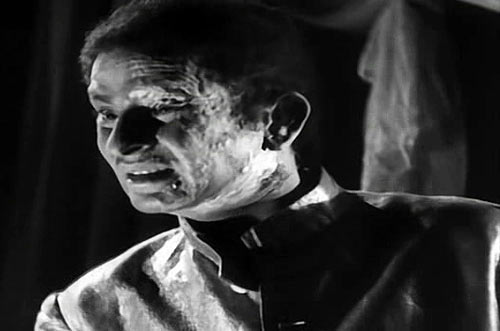

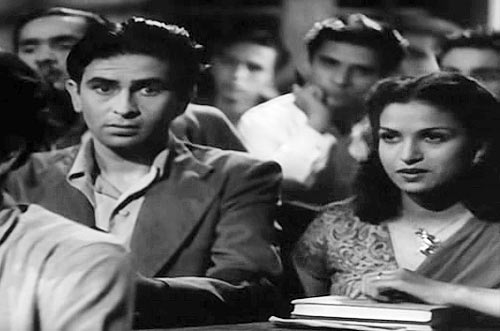

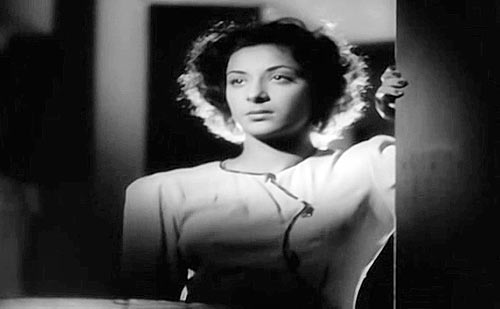
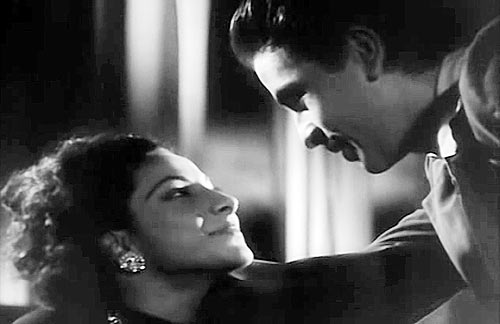

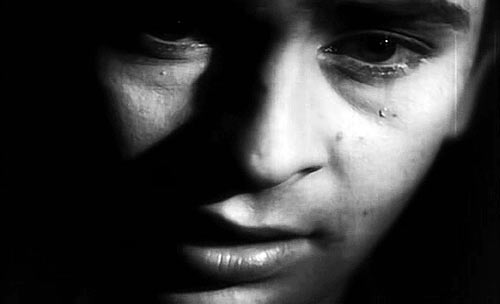
Comment
article